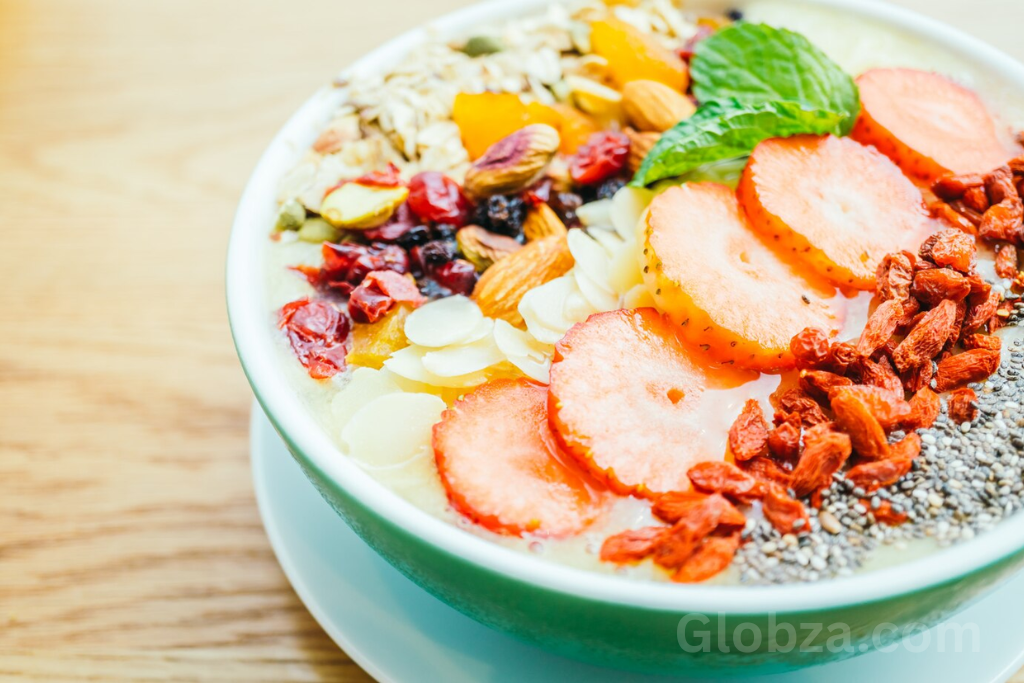Introduction
Fiber and fermented food have become cornerstones of healthy eating. They help keep your gut happy, strengthen your immune system, and even support mood stability. Yet many people struggle to include them daily. According to registered dietitian Dr. Laura Brown, “Fiber feeds your beneficial gut bacteria, while fermented foods replenish them.” That synergy makes fiber and fermented food a true power couple. In this guide, you’ll learn why these foods matter, how to fit them into your day, and which small changes make a big impact. Let’s explore practical steps to transform your meals, one bite at a time.
Why Fiber and Fermented Food Matter for Gut Health
Fiber and fermented food work together to nourish your digestive system. Fiber acts like a broom, sweeping away waste, while fermented foods introduce probiotics that support digestion. Studies in the journal Nature Reviews Gastroenterology show these foods may even lower inflammation. “Think of fiber as prebiotics that feed probiotics,” says Dr. Brown. Combining them helps your microbiome thrive. A balanced gut means more than just regularity — it impacts your immune strength, energy, and mental health. Incorporating fiber-rich foods like oats, beans, or lentils, alongside yogurt or kimchi, can truly revolutionize your wellbeing. Small swaps build big results over time.
Gut bacteria are involved in hormone production, immunity, and even how you process nutrients. That’s why protecting them through fiber and fermented food is so important. Dietitian Jane Lee explains, “Your gut is your second brain. Feed it wisely.” If you want to maintain a resilient, healthy gut ecosystem, building habits around these food groups is an excellent starting point. Remember, variety is key: a colorful plate supports a diverse gut microbiome. Whether you choose sourdough bread or sauerkraut, adding diversity will only help your system flourish.

How to Include Fiber and Fermented Food at Breakfast
Breakfast offers an easy way to get a head start on fiber and fermented food. You might top whole-grain toast with live-culture yogurt and berries or swirl kefir into your overnight oats. These simple habits provide a mix of fiber, probiotics, and antioxidants. “Your first meal sets the tone for your microbiome,” states Dr. Brown. Swapping sugar-laden cereals for fiber-rich options can help reduce inflammation and stabilize energy throughout the day. You don’t have to overhaul everything overnight. Choose one new breakfast swap and build from there.
If you enjoy smoothies, consider adding flaxseeds for fiber and a dollop of probiotic-rich yogurt. Or sprinkle chia seeds on top of fermented cottage cheese with fruit. “Fermented dairy plus fiber-rich seeds are a breakfast winner,” says Lee. The possibilities are endless if you keep your gut in mind. Start small and aim for consistency; daily habits matter more than perfection. Breakfast is an easy, low-pressure time to practice these changes, making it a sustainable routine that supports gut health long term.
Fiber and Fermented Food Lunch Ideas to Try
Lunch is another perfect opportunity to add more fiber and fermented food. For instance, you could include lentil or chickpea salads topped with a spoonful of kimchi or sauerkraut. “Legumes are fiber superstars,” according to dietitian Lee, “and pairing them with fermented vegetables makes them even more powerful.” You could also try a sourdough sandwich loaded with fresh greens and pickled veggies for a delicious, gut-friendly twist. These combinations are practical, budget-friendly, and easy to prepare ahead of time.
Variety at lunchtime means you keep feeding different gut bacteria, maintaining a balanced microbiome. If you like wraps, opt for whole-grain tortillas stuffed with tempeh and fiber-rich vegetables. Add a spoonful of probiotic yogurt dressing for even more benefits. These simple ideas help build a sustainable gut-friendly lifestyle. “Don’t think complicated,” says Dr. Brown, “just think consistent.” Every balanced lunch brings you closer to a healthier gut, one forkful at a time.
Easy Fiber and Fermented Food Snacks for Energy
Snacks often get overlooked, but they’re a prime chance to fit in fiber and fermented food. A handful of nuts with a small bowl of kefir is a great gut-boosting option. Likewise, whole-grain crackers with miso spread or veggie sticks dipped in probiotic-rich yogurt are both tasty and easy. “Snack time is a perfect way to boost gut bacteria diversity,” Lee explains. If you plan ahead, you’ll reach for nourishing options instead of processed ones, helping your gut stay resilient and healthy.
Snacking mindfully also supports steady blood sugar levels. Fiber slows glucose spikes, while probiotics support digestion. You could even prep a homemade trail mix with dried fruits, seeds, and a small serving of fermented pickles on the side. It sounds quirky, but “Your microbiome will thank you,” says Dr. Brown. Think beyond chips — a simple swap can deliver serious gut benefits. Your body and mind will appreciate the difference over time.
Fiber and Fermented Food at Dinner: Comfort Foods Reinvented
Dinner is a wonderful time to include fiber and fermented food in satisfying, warm dishes. Think bean-based chili topped with a spoonful of sauerkraut, or brown rice bowls with fermented miso soup on the side. “Traditional cuisines often combined fiber and fermented food naturally,” Lee points out. Modern versions can be just as delicious. If you enjoy pasta, consider whole-wheat spaghetti with fiber-rich vegetables and a side of fermented pickled peppers for a tangy finish.
Soups are another dinner-friendly option. Lentil soup with a swirl of probiotic-rich yogurt creates a comforting, balanced meal. Or try a hearty stew built around beans, barley, and fermented toppings. These dinners provide gut-friendly nutrients without sacrificing taste. “Healthy can absolutely be delicious,” Dr. Brown reassures. Focus on seasonal ingredients, add fermented condiments, and you’ll nourish your gut while enjoying your evening meal.

Simple Shopping Tips for Fiber and Fermented Food
Grocery shopping is easier when you know what to look for. For fiber, choose whole grains, beans, vegetables, and seeds. For fermented food, look for words like “live cultures” or “active cultures” on the label. “Always check for added sugars in fermented foods,” says Lee, “since too much sugar cancels out the benefits.” Planning a shopping list ahead of time helps you stay focused and resist processed foods. Prioritize produce, whole grains, and fresh fermented products for the best results.
Farmers markets are excellent sources of fermented foods like sauerkraut or kimchi. You can also find naturally fermented pickles and artisan sourdough bread. The more diverse your shopping basket, the better for your gut. “Diversity equals resilience,” Dr. Brown reminds us. Remember to rotate your choices week by week to support the widest range of gut bacteria. Shopping becomes a fun adventure when you focus on gut health.
Conclusion
Adding fiber and fermented food to your daily meals is easier than it seems. Start with one meal or snack, then expand as you build confidence. “Small, steady changes are the secret,” says Lee. Don’t worry about perfection — consistency matters more. Your gut will thank you with better digestion, stronger immunity, and even more stable moods. Think of these foods as daily nourishment for your microbiome, not a restrictive diet. Over time, your body and mind will notice the benefits.
By keeping fiber and fermented food top of mind, you make an investment in lifelong health. Remember to experiment with new flavors, textures, and recipes. “Food is medicine,” Dr. Brown sums up, “so make it delicious.” Use the ideas in this guide as inspiration to get started today. Your gut — and your overall wellbeing — deserve the very best.




